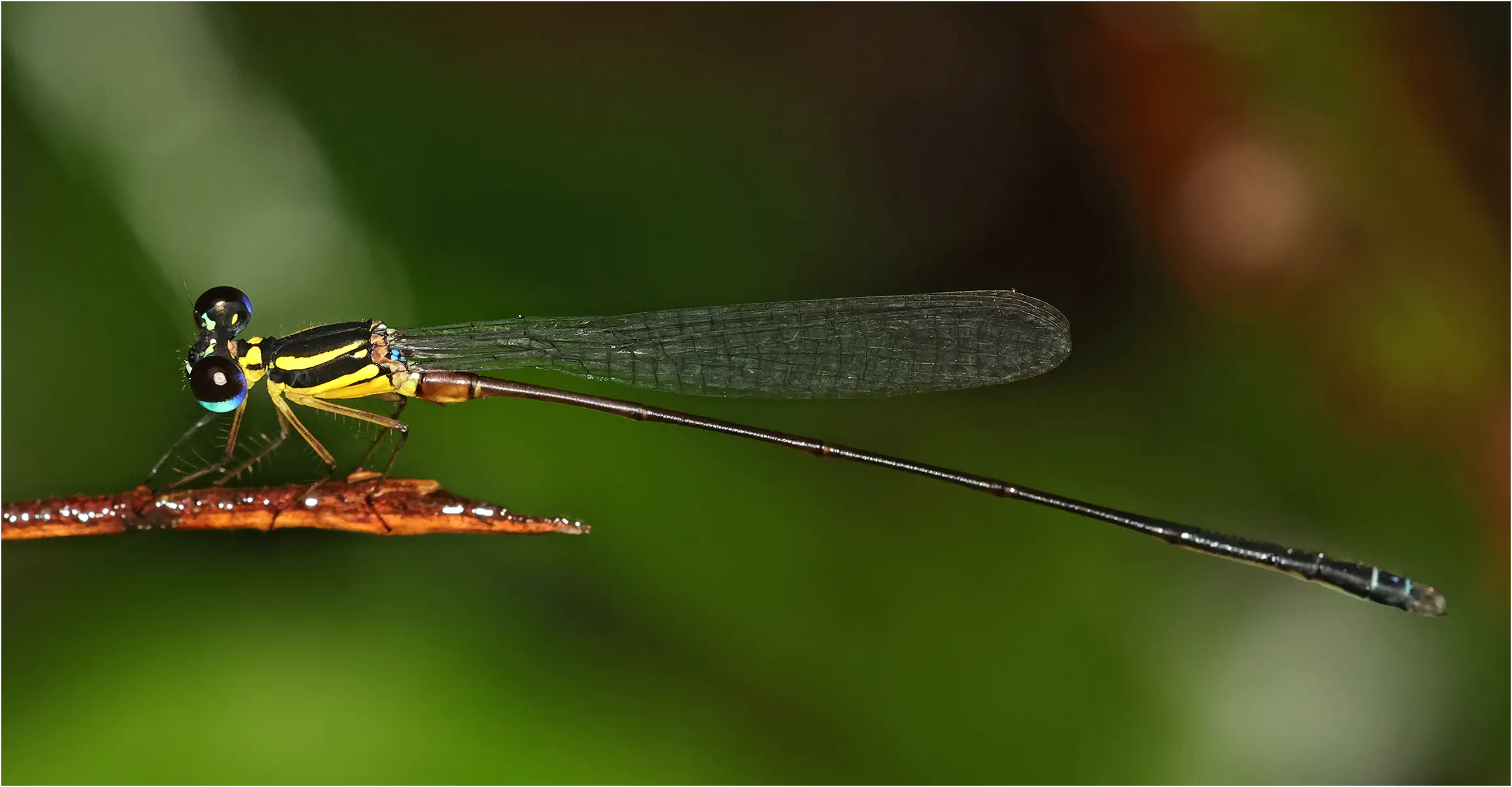
Coeliccia flavostriata male is part of a genus in the Platycnemididae family that currently includes 80 members in Asia, including 15 in Borneo, all endemic. Nine species were described in Asia in 2020, which suggests that more will likely be added to the list.
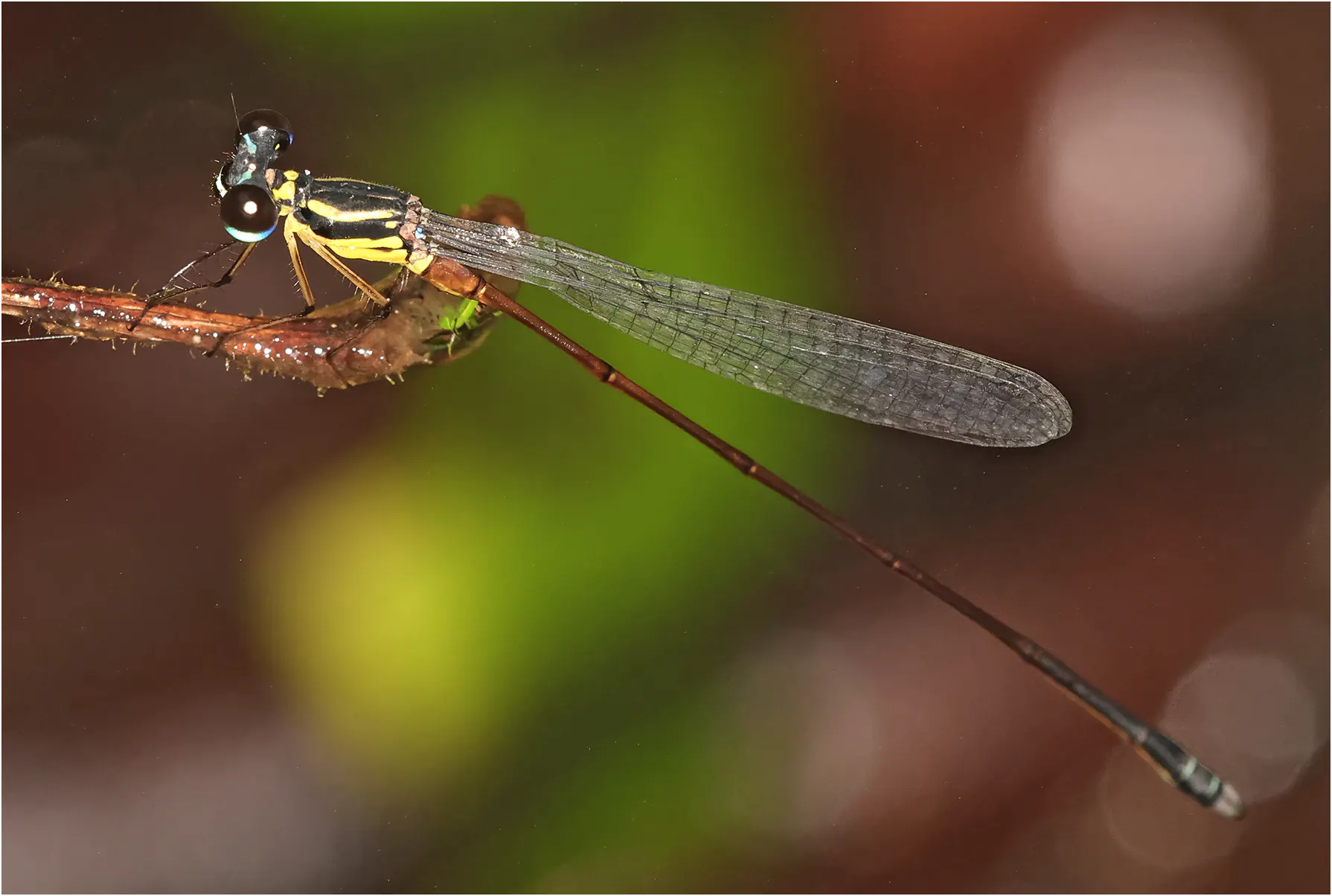
We encountered them at the beginning of our stay, in rather difficult climatic conditions, that is to say in the rain, of course in the forest and in the shade.
It belongs to the » borneensis » group, six of whose members present in Borneo have very similar thoracic markings. They are differentiated by the blue markings they bear on the S9 and, of course, the anal appendages. The blue spot of Coeliccia flavostriata is reduced, in a triangle or diamond shape, and sometimes absent, probably for older subjects.
It is in any case very different from the other Coeliccia we encountered during this stay.
My photo on the right below seems strange because of the presence of water between the anal appendages; it was raining heavily that day.
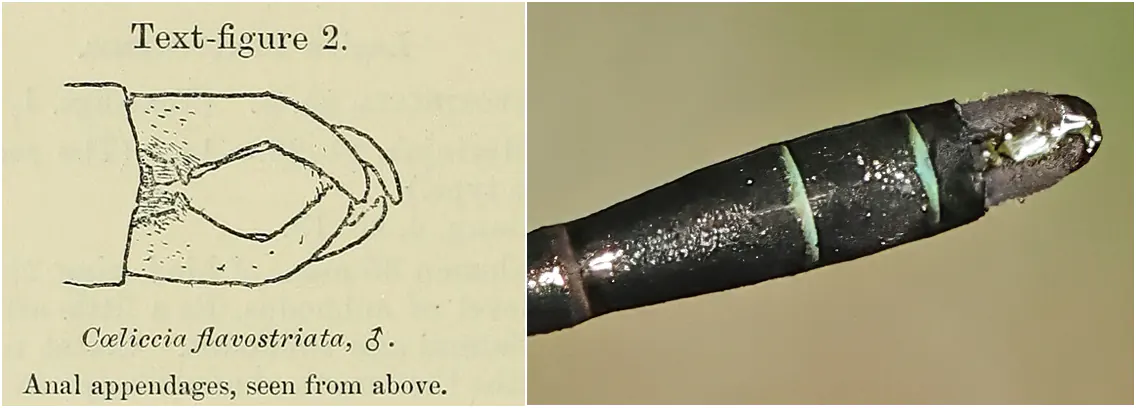
Laidlaw (1) tells us that the length of the abdomen is 35 mm, Dow (2) gives it 31 to 37 mm without the appendages, which gives a total length of about 41 mm.
We have encountered it in forests, in low mountains, in ditches, near streams or small torrents, always in parts where the vegetation is a little less dense than for its cousins C. nigrohamata or C. cf. nemoricola.
We have not encountered a female.
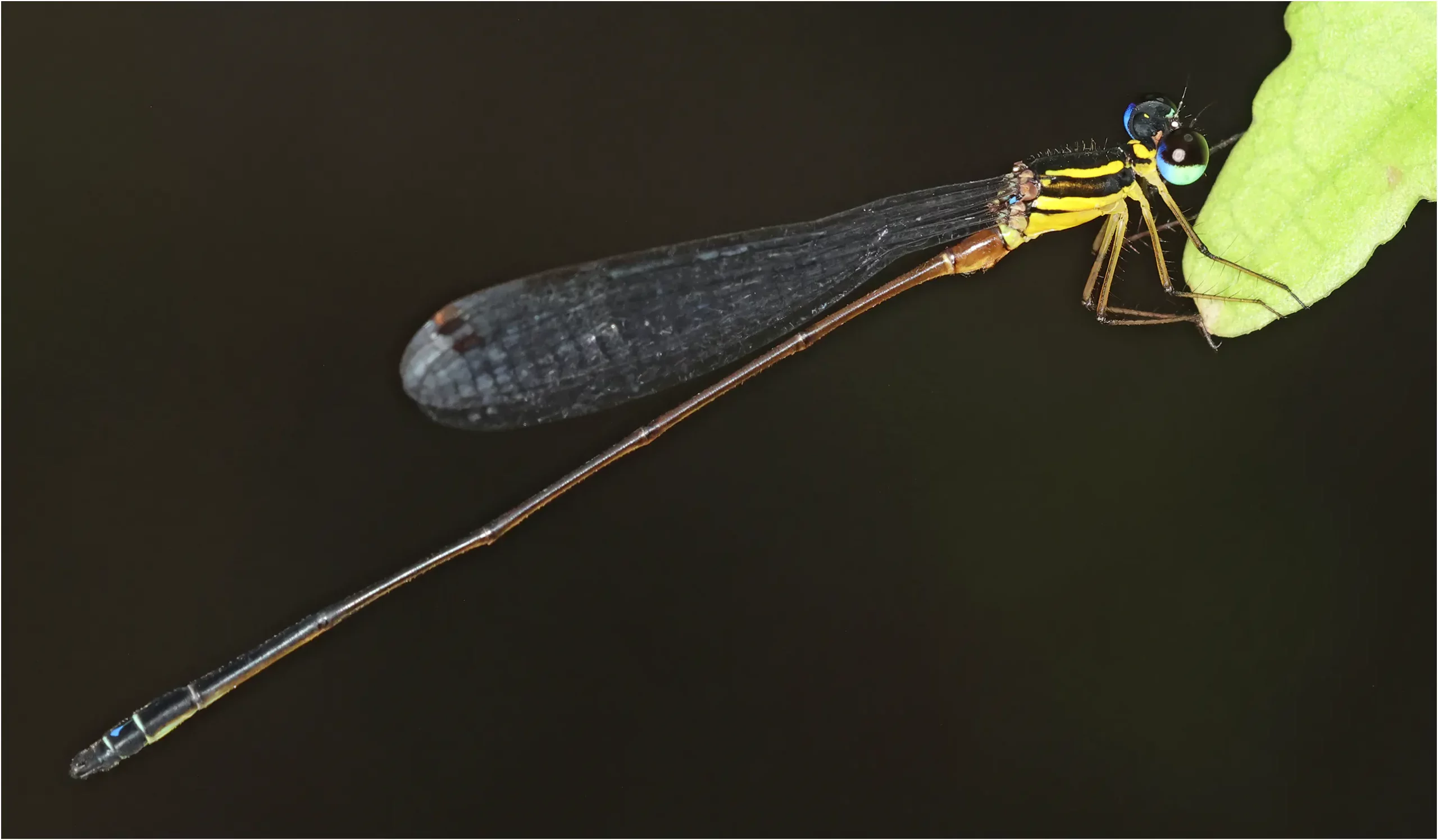
Although it appears colorful from a distance , when you get closer it is truly magnificent and you will notice its largely yellow pronotum and the curious yellow and blue markings that seem to stand out from the lateral ocelli.
Not to mention the eyes which show rich shades of purplish blue towards a yellow/green gradient.
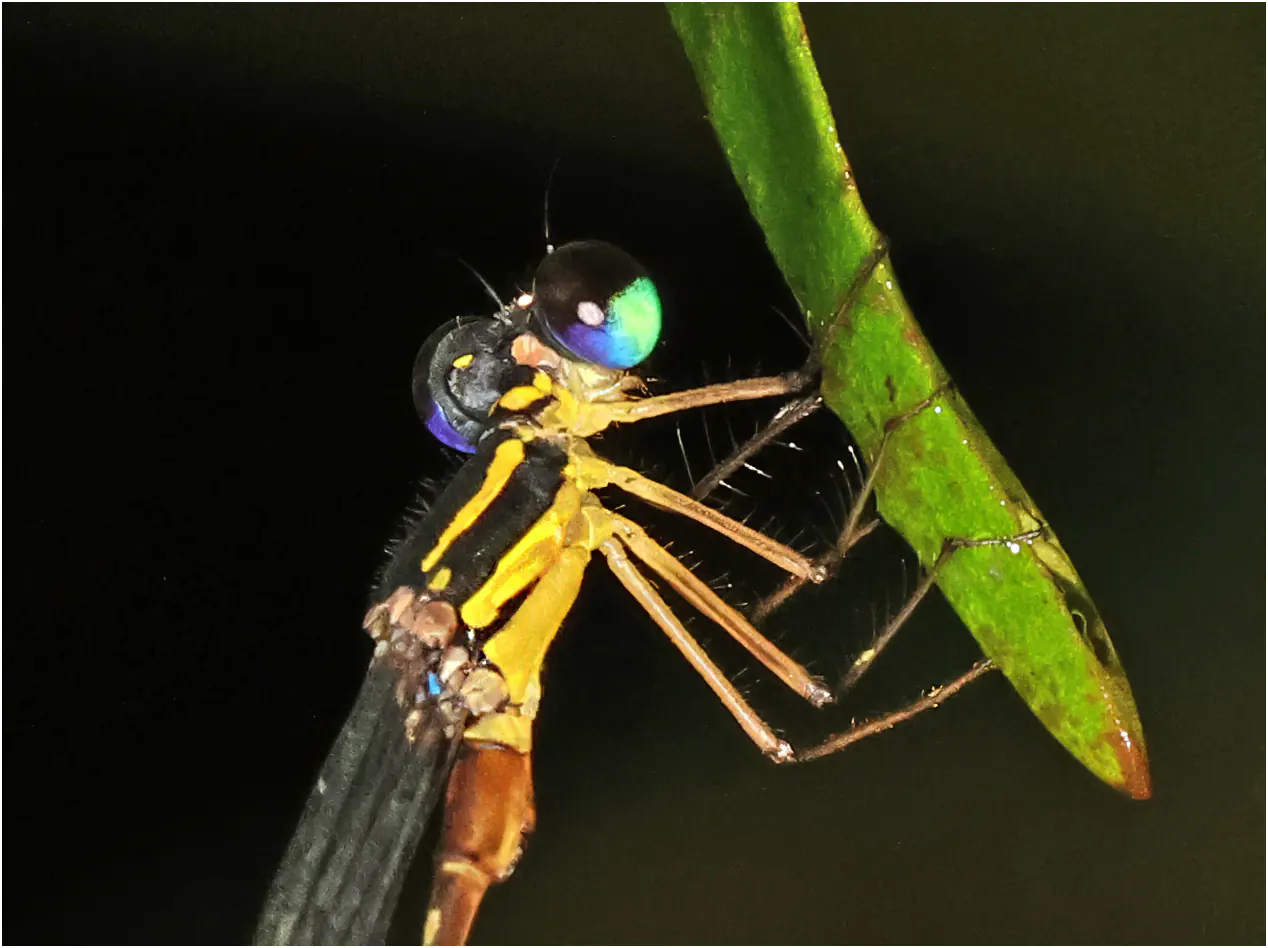
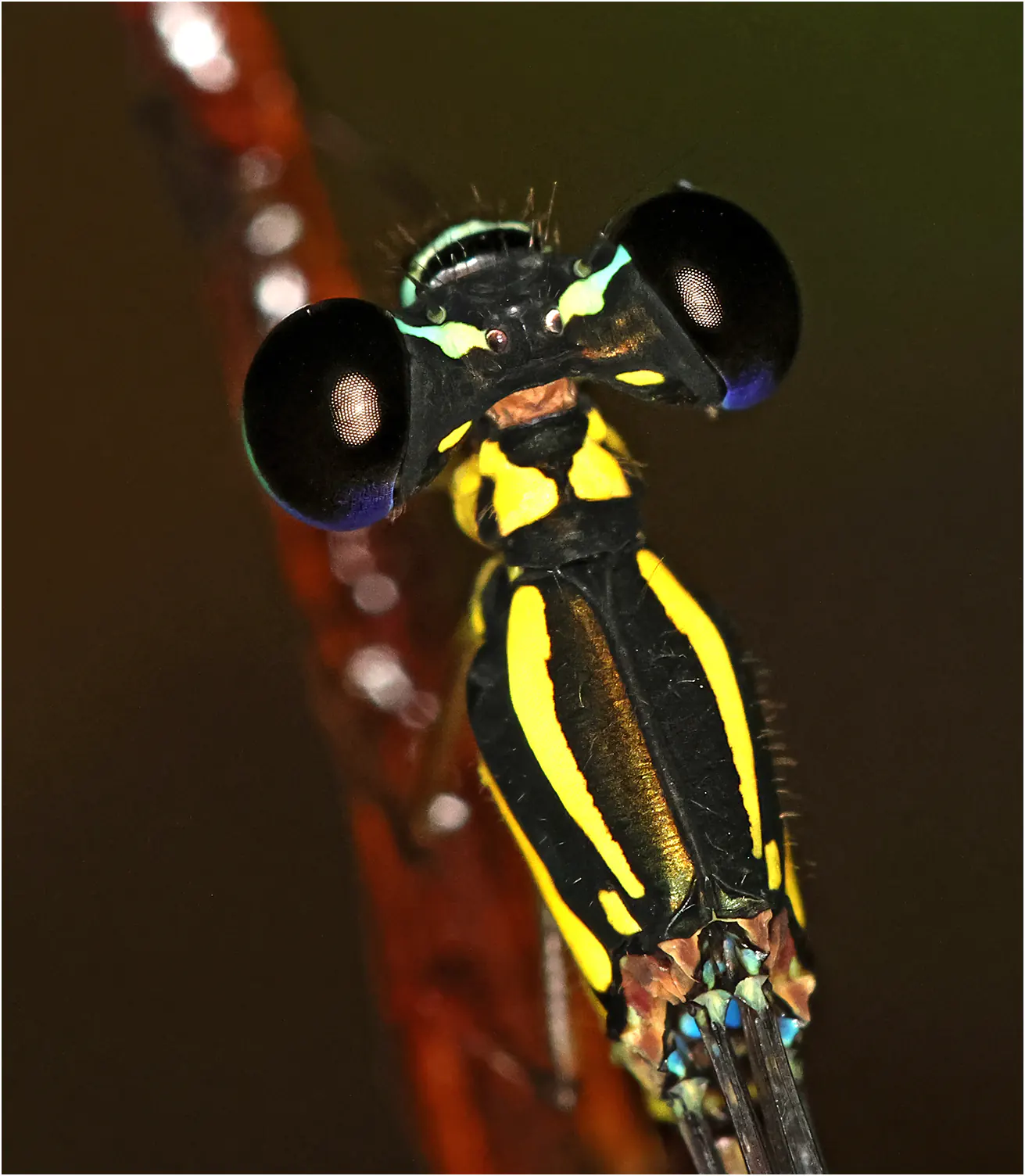
It is endemic to Borneo and its distribution is very restricted to the far west of Sarawak (around Kuching) and northwest Kalimantan (2).
IUCN Red List .
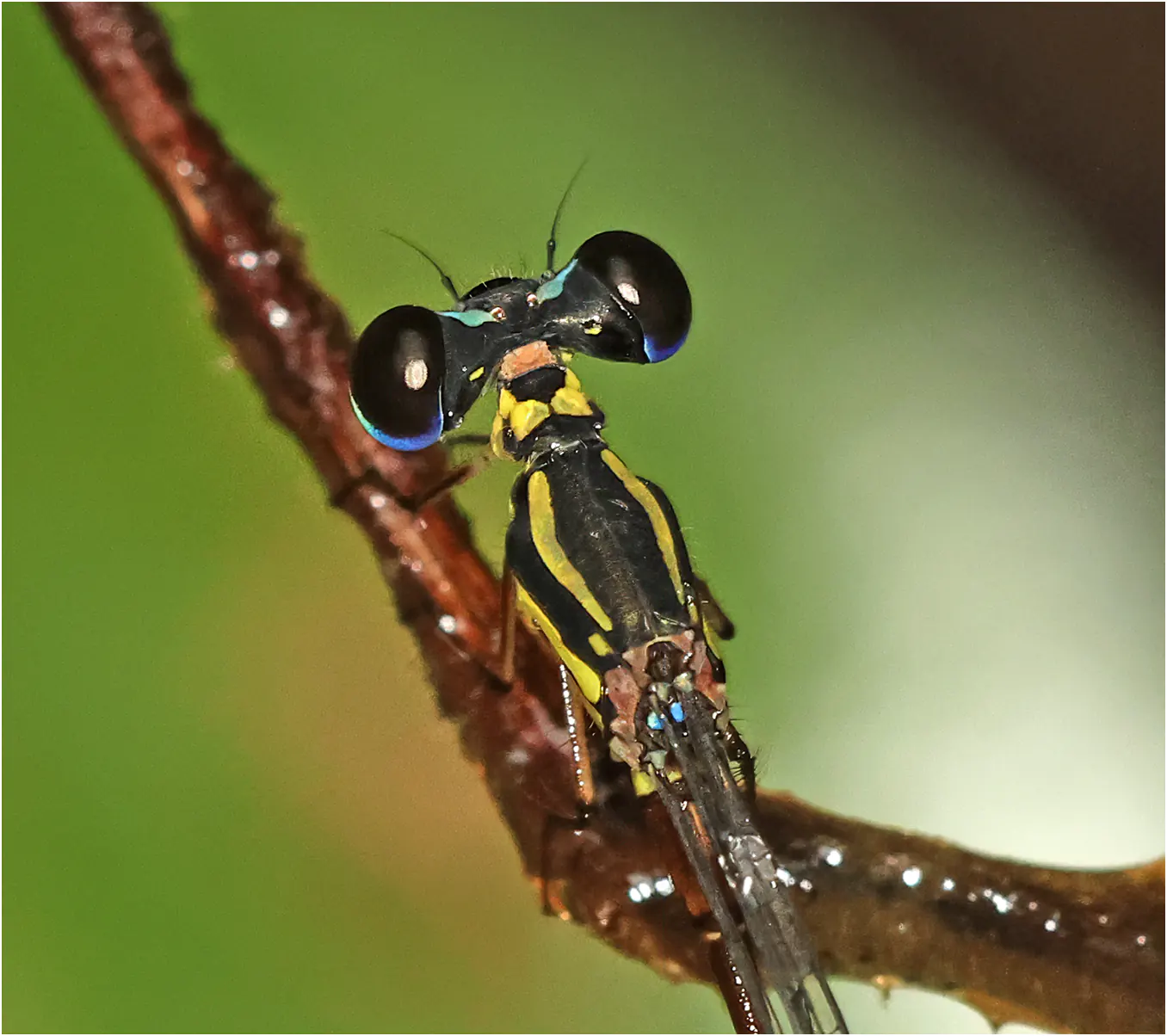
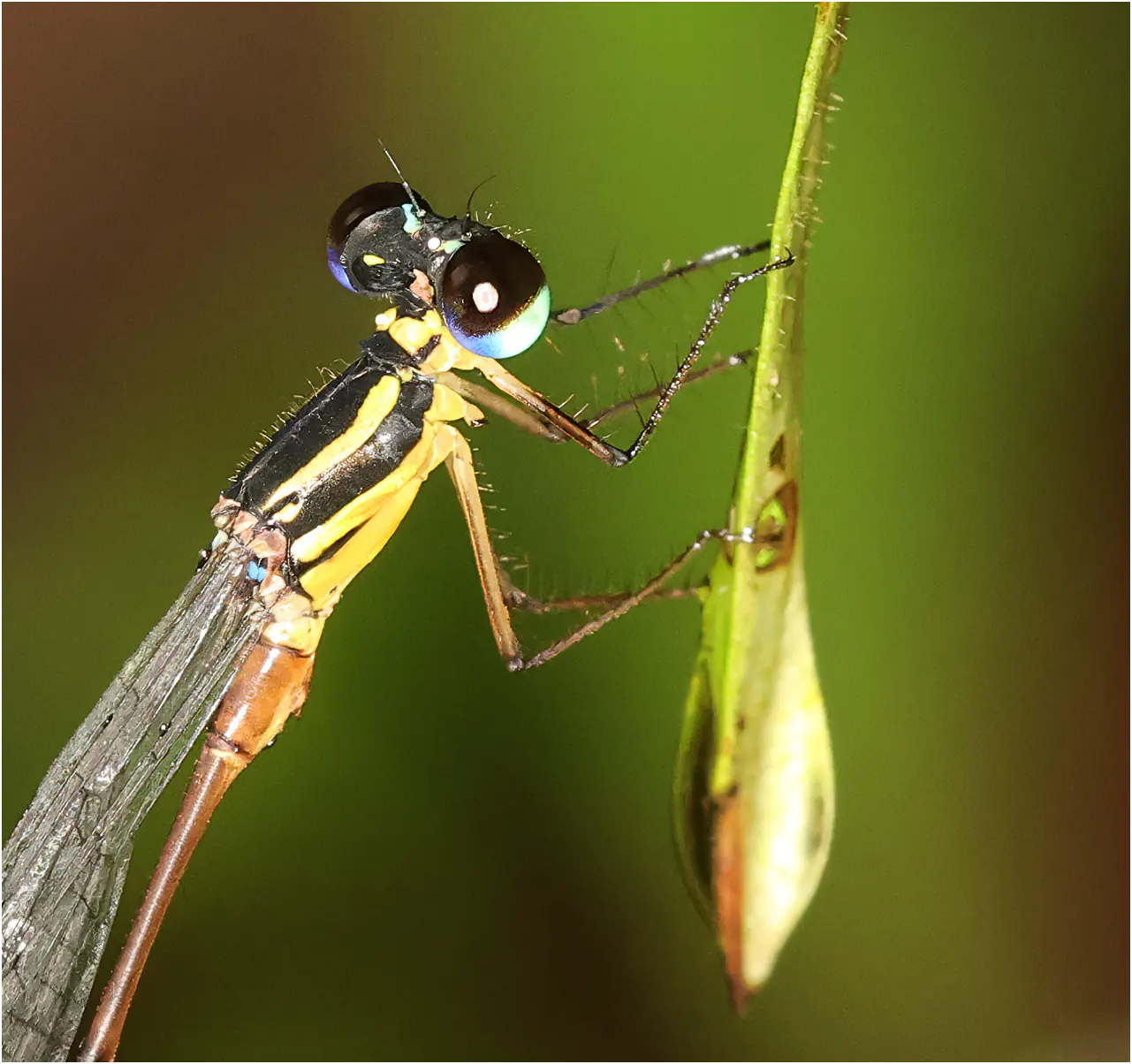
Etymology
Coeliccia : Selys described the first species of the genus in 1863 under the genus name of Trichocnemis (longhorn beetle) and it was Kirby who rectified and created the genus Coeliccia in 1890. This genus name, unexplained by the author to my knowledge, perhaps comes from the Latin coelum (or caelum ), which means sky or celestial , and a suffix or simple ending chosen for aesthetics or phonetics. Indeed, the first species described by Selys, Trichocnemis membranipes, is sky-blue , for all its non-black parts. Flavostriata , from the Latin flavus meaning yellow and striatus for striated , thus evoking, although Laidlaw does not mention it, the yellow bands of its thorax.
1- Laidlaw, Frank Fortescue. (1918). Some additions to the known dragonfly fauna of Borneo, with an account of new species of the genus Coeliccia. Proceedings of the Zoological Society of London, 1917, 223–232. P. 223.
2- Dow R., 2010 – Revision of the genus Coeliccia (Zygoptera: Platycnemididae) in Borneo. Part I: The borneensis-group of species – Zoologische Mededelingen , Volume 84 – Issue 7 p. 117- 157. P. 144.